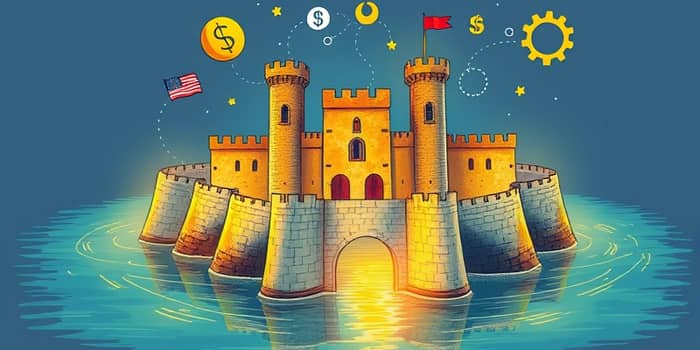
In an era of rapid disruption and cutthroat competition, understanding how companies build and maintain resilient long-term competitive advantages is critical. By examining the concept of a competitive moat—popularized by investment legends—and its endurance over years or decades, leaders and investors can identify which businesses are best poised for lasting success.
The term “competitive moat” was famously coined by Warren Buffett to describe the protective barrier surrounding a castle, symbolizing a company’s defenses against rivals. A moat comprises the unique attributes that fortify market share and shield profits from erosion.
At its core, a competitive moat represents intrinsic characteristics—like powerful brands, proprietary technology, or network effects—that create high entry barriers and deter potential competitors for years to come.
While many firms enjoy fleeting advantages, true investment and strategic value lie in moats that persist over multi-year horizons. Assessing durability over five, ten, or twenty years helps decision-makers gauge resilience to technological shifts, economic cycles, and leadership transitions.
Companies with enduring moats often weather downturns, outlast management changes, and adapt to evolving consumer preferences without sacrificing profitability.
Different industries yield distinct defensive characteristics. The most durable moats typically fall into the following categories:
Even the strongest defenses can weaken over time. Major threats include:
Evaluating moat persistence requires a blend of qualitative insight and quantitative analysis. Key elements include:
By establishing clear time horizons—such as five- and ten-year durability targets—investors can spot early warning signs of erosion or opportunities for reinforcement.
Industry dynamics heavily influence how moats form and hold up over time. A comparative overview highlights this variance:
In regulated sectors like utilities and payments, moats often endure due to high capital requirements and legal protections. Conversely, technology fields can experience faster moat erosion unless companies continually innovate.
Organizations seeking to strengthen their defenses should focus on four strategic pillars:
1. Continuous innovation – Investing in R&D and embracing emerging technologies prevents obsolescence and sustains competitive edges.
2. Customer experience excellence – Delivering exceptional service and seamless integration deepens loyalty and raises switching costs.
3. Ecosystem development – Building complementary products and partner networks amplifies the core offering’s value.
4. Operational discipline – Maintaining cost leadership through efficient processes and disciplined capital allocation ensures superior margins.
By weaving these principles into corporate strategy, businesses can reinforce existing moats and guard against emerging threats.
In an unpredictable world, companies with durable competitive moats stand out as beacons of stability. By understanding the types of moats, anticipating challenges, and rigorously measuring durability, investors and managers can make more informed decisions and avoid pitfalls.
The quest to build and preserve a strong moat is not a one-time effort but an ongoing journey. It requires vigilance, strategic foresight, and a willingness to adapt. Those who master this discipline will enjoy protected profits, resilient market positions, and the satisfaction of knowing their business is prepared for the long haul.
References













